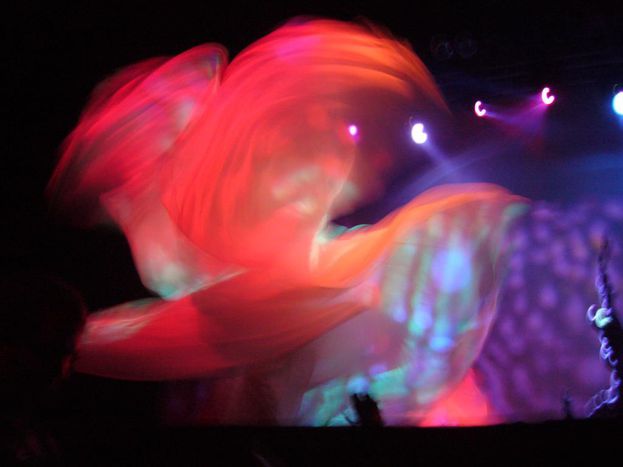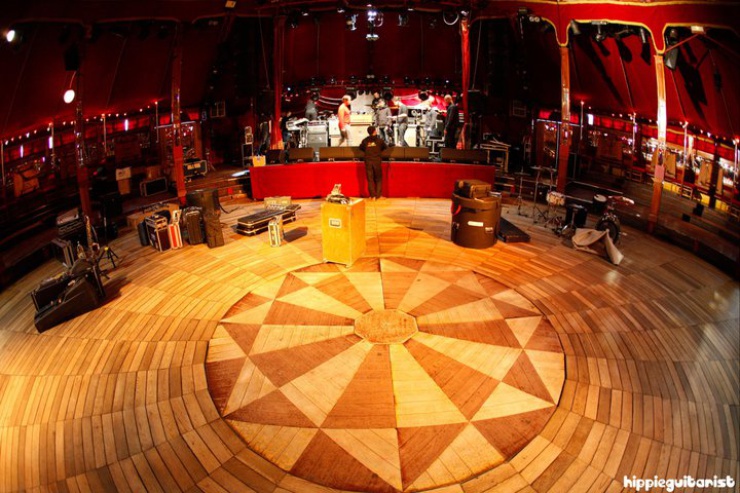
‘Nos plusieurs’: autistic theatre stars meet Indian epic in French documentary
Published on
In filming a theatre production performed almost entirely by young people with learning difficulties, French director Fred Soupa blurs the boundaries of what we typically perceive as ‘normal’. His ensuing documentary ‘Many Of Us’ is released in national cinemas on 28 September
A young man sits on another as if on a chair. At first glance it is easy to miss the second man, so well do the movements of each complement those of the other. The actor murmurs into his partner’s back and his partner amplifies his words, spitting his lines out at the audience. Is this an innovative way of representing the gods and demons which people the Indian epic poem, the Mahabharata, on which this performance is based? Perhaps it’s a subtle technique to overcome the problems of acting with autistic performers.
‘Nos plusieurs’: a film out of theatre
In truth, it is both. This scene comes from Many Of Us ('Nos plusieurs'), a 2011 documentary screened as part of Paris’ ‘Futur Compose’ festival. Held in late September, it gathers a pan-European programme of art and culture addressing mental health problems. Many Of Us tells the story of a theatre production of the Mahabharata which was performed during the 2010 edition of the festival. It is a collaboration between a group of talented actors led by French director Vincianne Regattieri, the majority of whom were young people with learning difficulties, many of whom have varying levels of autism. Weekly rehearsals took place over the course of a year, making the theatrical production in itself an epic. Talking at the film’s screening on 22 September, French psychologist and festival founder Gilles Roland-Manuel describes the project as ‘a risk, but one which motivated us’.

Had Fred Soupa chosen to document the trials and tribulations of the theatrical project, his film could easily have fallen into the style trap of reality television. By structuring the film around the unfolding of epic itself, he cleverly avoids this. Instead of following the development of the production chronologically, he creates a montage of performance over rehearsal, slipping from the down-to-earth atmosphere of the rehearsal room to the carnivalesque extravaganza that is the performance. While managing to reproduce beautifully the development of the young performers over the year, the film avoids in-depth portraits of any one individual and their development, instead offering engaging snapshots of each performer. This is the film’s strength; while other (fictional) films and books about autism (The Curious Incident Of The Dog In The Night-Time, 2003 or Rain Man, 1988) have focused on one character, Many Of Us offers a much more multifaceted image. Soupa makes it impossible to generalise about the young performers who are very much individuals, from the speechless but expressive Sebastian to the affectionate Michael Jackson fan Lynda.
Vocis non grata: ‘autism’
Soupa avoids the words ‘autism’ and ‘autistic’ throughout the film, neither labelling the young people nor clearly distinguishing them from the ‘professional’ actors they work with. ‘The best would be for the stigma to be reversed so that the viewers interrogate themselves as to what or who is normal (the actors, themselves),’ says Soupa. Normality isn’t exactly inverted in the film, but instead ceases to hold normality as a concept - for example, it’s difficult to figure out whether or not one young vocal woman, Patricia, has learning difficulties or not. With everyone in costume and make up it becomes nigh on impossible to distinguish between the professional actors and the young people they support. Aside from the (almost technical) issues of certain performers having speech difficulties, the cast and rehearsals captured on film resemble those of any theatre production with young actors. Giggly actresses, actors who have to be pushed to show any energy or enthusiasm: all of these are daily realities for anyone working with youth theatre. The problems which cropped up, as well as the firmness of the director Vincianne Regattieri, suggest nothing of the supposed disabilities of those she was working with.
The cast and rehearsals captured on film resemble those of any theatre production with young actors
One of the most moving scenes from the Mahabharata shown during the film is the moment when Gandhari discovers her future husband is blind. Distraught, she permanently binds her own eyes so as to share his experience. Similarly, Many Of Us catapults us into the experience of the performers. Soupa manages not to increase the distance between observer and observed. Rather, in a similar way to the international success Etre Et Avoir (2002), a documentary about a small rural school, the film encourages not observation but empathy. It pulls us into the world of the performance and making us live the experience of Lynda, Nicolas and their fellow performers over a year, in just 56 brief minutes.
Images: main (cc) Panavatar/ Flickr; in text ©Cabaret Sauvage/ courtesy of Facebook page



